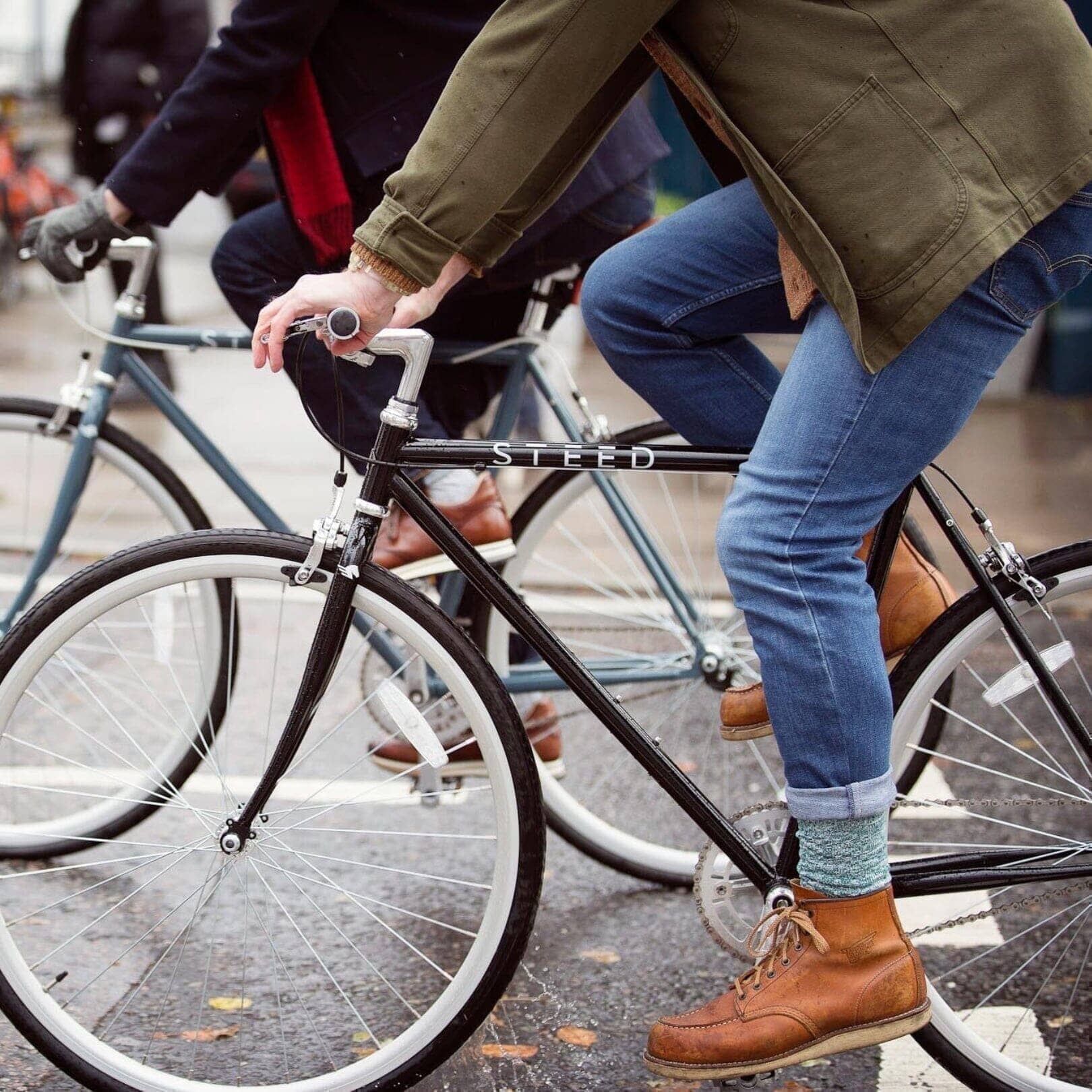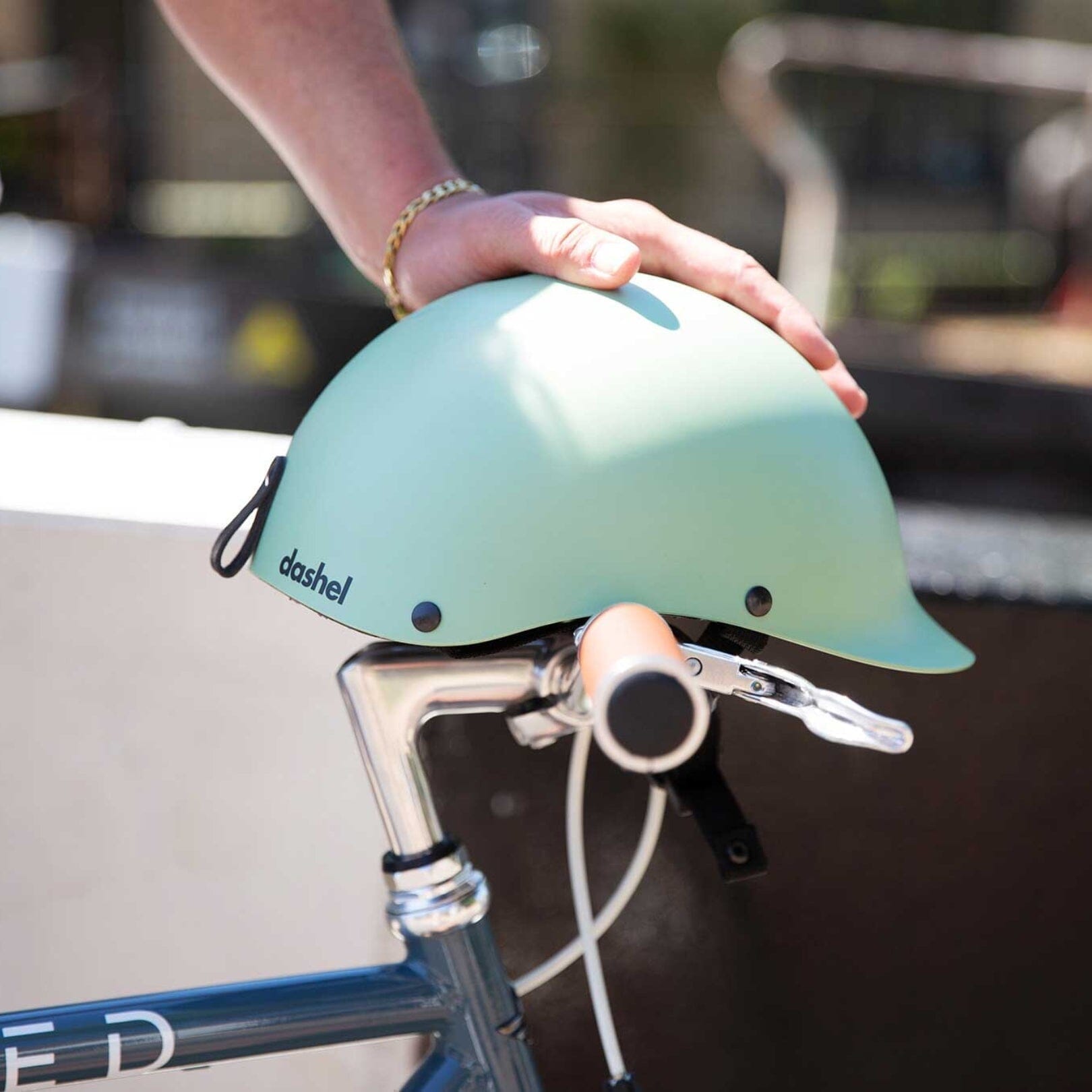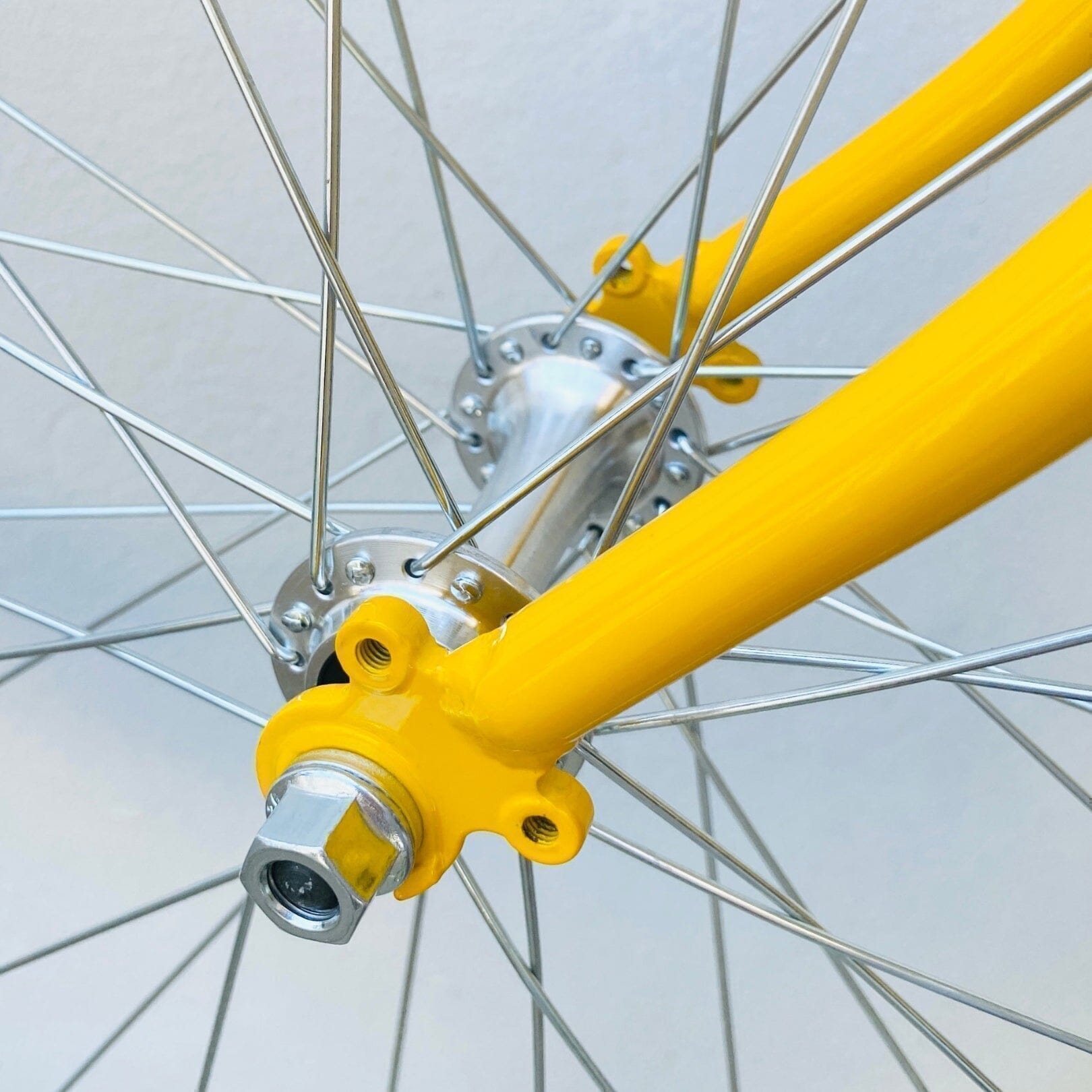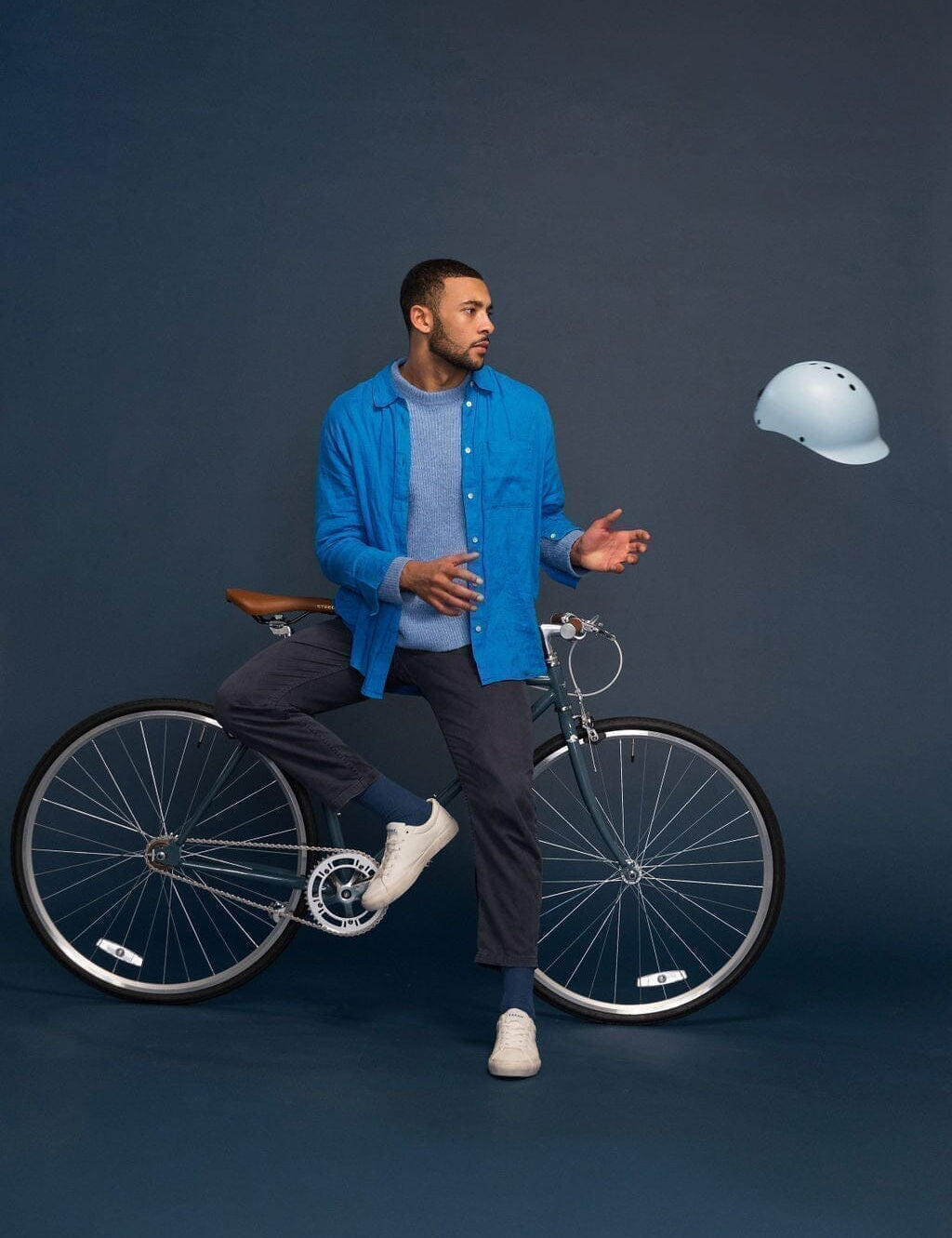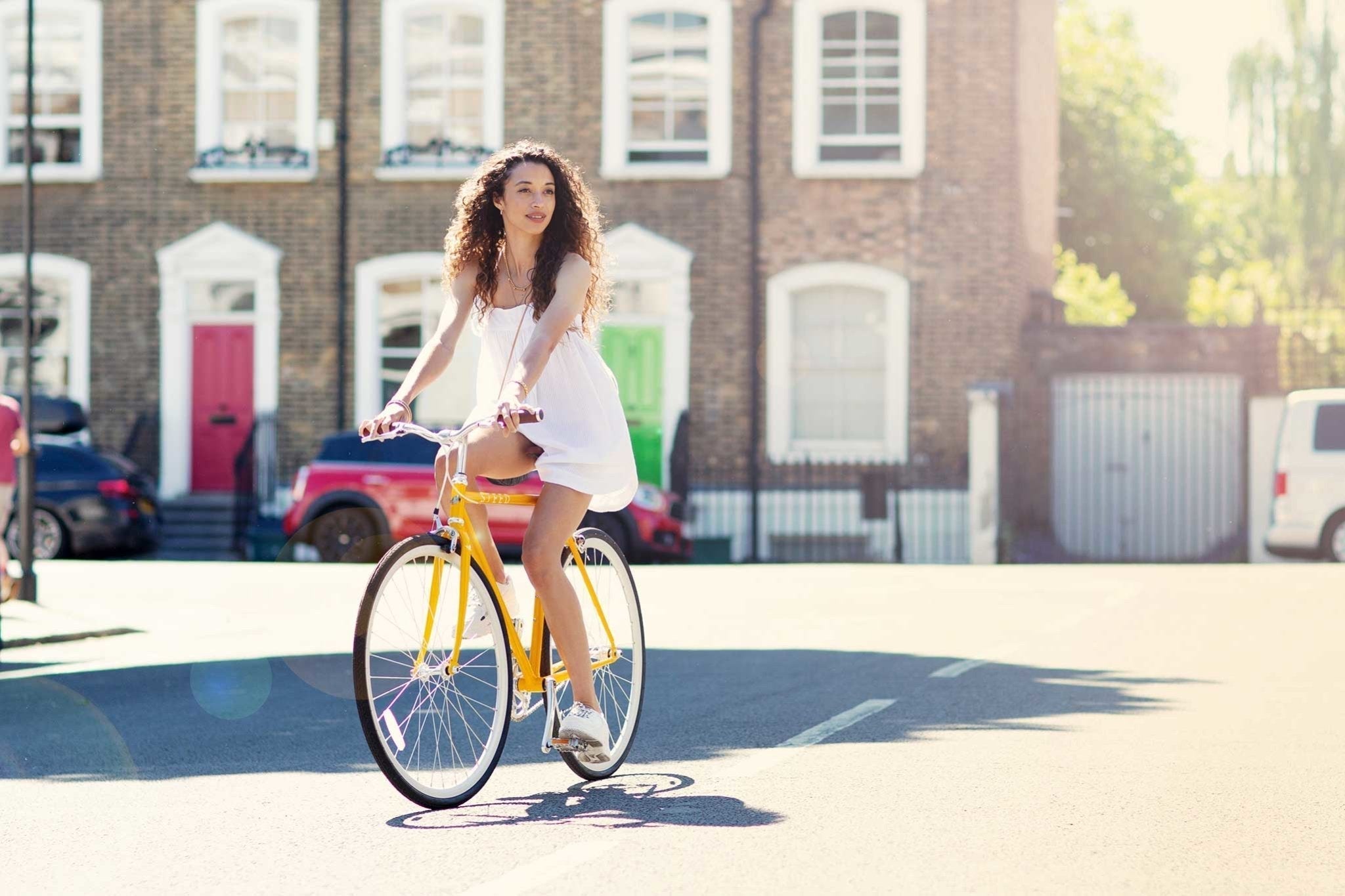How to stop your fixie bike without brakes
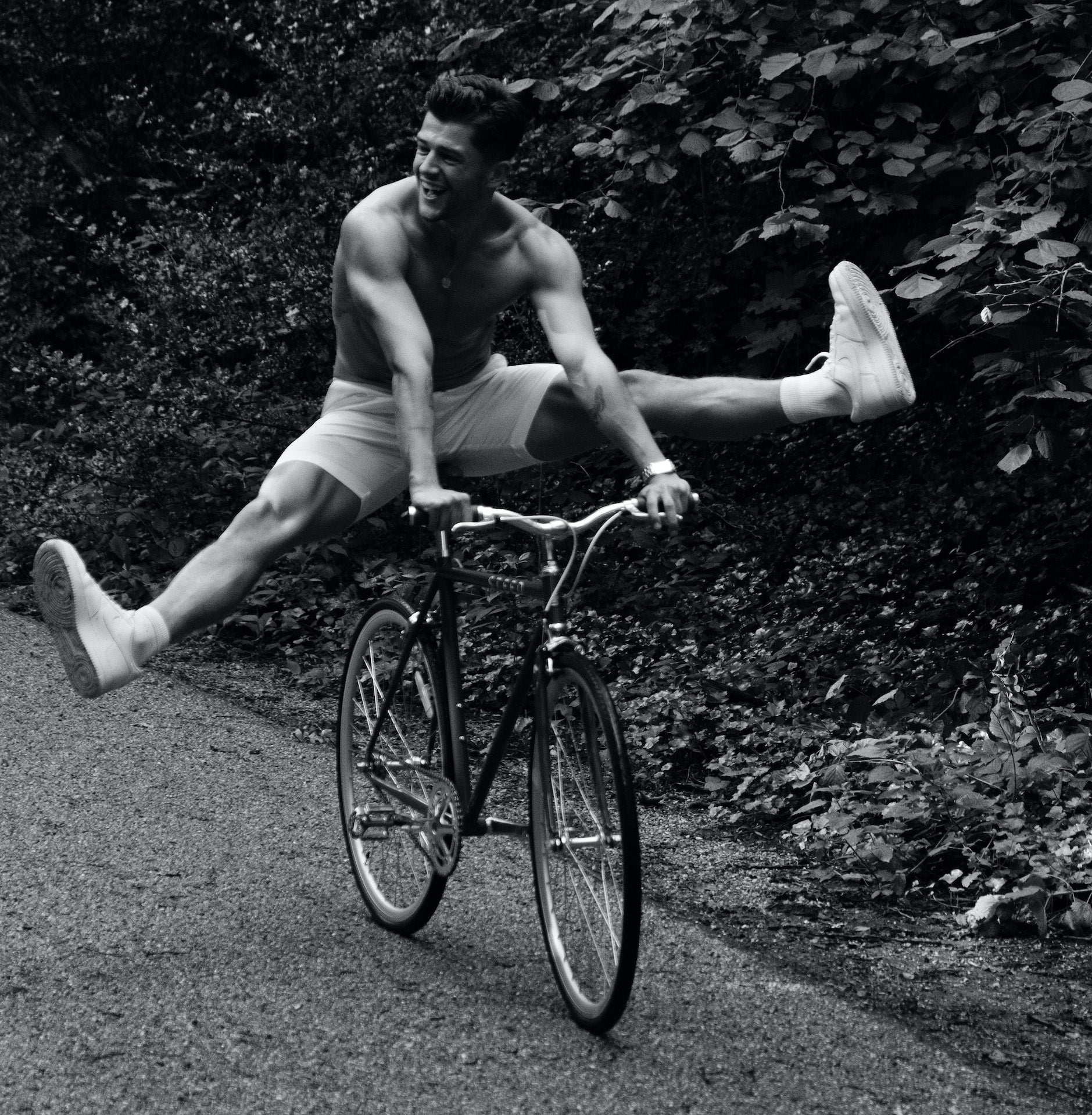
As a fixed gear rider, you can be sure that the day will come when you need to stop: at the traffic light, or in front of a pedestrian who is crossing a street.
However, stopping with a fixed gear bike can work in a few different ways: you can use the brakes on the handlebars or use your body to brake, but remember that your speed can be increased by the fact that your pedals are always turning.
So what do you do? How do you stop? What's stopping with a fixie bike?
If you have just bought your first fixed gear and have some difficulty braking, this article will help you. We explain how to stop your fixie, tell you about the methods to use and give you advice so that your braking is more efficient.

4 methods and tips for braking with your fixie bike
Fixies are the most fun you can have on two wheels. But since they have only one gear, fixed-gear bikes require a different braking strategy than other bikes. This can be a problem for beginners, who may not have the skills or confidence to stop safely. Here are our tried and tested methods:
1. Stop pedalling and relax your legs
During normal riding, you're constantly pedalling — even when coasting downhill — so you don't notice how hard your muscles are working. When you need to stop, the first instinct might be to suddenly stop pedalling, but you want to do this gradually.
Remember: Since the pedals are connected directly to the rear wheel, you can control the speed and slow down using them. So relax your legs, and let them spin as fast as they want while you focus on stopping your bike.
2. Equip yourself with straps
Straps are among the most useful accessories for anyone who rides a fixed gear bike. They're also one of the best ways to optimise braking. To use them, all you have to do is tighten them around your ankles, this will make it so you transfer power from your legs to the pedals by either pushing down or pulling up.
To brake, you’ll want to apply resistance to the pedals using the push and pull motion to flip the pedal around.
If you opt for this solution, make sure to buy quality straps and try them before you head out on the road or track.
3. Learn how to Skid
To skid stop, all you have to do is pedal slower than you normally would until your foot has nearly stopped turning. Then suddenly stop pedalling and let your feet drag against the tires (as if you're braking).
The more pressure you exert on your pedals while they're spinning slowly and then suddenly stopping them altogether, the more effective this method will be at slowing you down.
If you're going downhill, you can use this braking method in conjunction with back-pedalling to scrub speed off quickly and control your descent.
This technique may feel awkward at first, but don't worry! You'll catch on quickly. If you really want to impress other riders on your fixie bike and show off your mad skills, try doing a skidding stop with only one foot!
4. Hop-stop to regulate your speed
The hop stop, also called a 'no-feet' stop since the rider lifts his feet off of the pedals, is a good way to stop, particularly if you have good balance.
It’s done by lifting up with your foot that is on the descending pedal while unseated. Lift up with your other foot a bit, so as to lift your rear wheel into the air slightly. This will shift all your weight to the back of the bike as you're coming to a stop.
While your rear tire is off of the ground, try to bring the pedals in midair even before you land. When your rear tire hits the ground, there will be a small skid effect, but soon thereafter, your momentum will cause the wheel and pedals to spin.
Keep hopping the rear tire into the air and doing this until you come to a stop. This is less damaging to your tire than a skid stop (strapless or with straps).

How is it safer to brake without brakes?
The direct connection with the pedals on fixie bikes makes it easy to modulate your speed, which is crucial for riding on busy streets, where you can’t always rely on hand brakes. It’s virtually impossible to lock up the rear wheel because you have to brake the pedals before you stop pedalling, which gives you a better sense of whether or not you can safely navigate wet streets.
Why is a bike safer without brakes?
A lot of people ask about the safety of riding brakeless. Brakes are safety devices, so riding without them is considered by many to be an inherently dangerous practice.
The most important safety device for a bicycle is the operator. Most times, when someone has crashed due to a lack of brakes, it's because they didn't pay attention to what was going on around them. It's very easy to get into a mindset where you pedal faster and faster and don't think about traffic or pedestrians or anything else. Here are the two most important things to keep in mind to ride a fixie safely:
1. Get in the mindset to pedal with caution
When you ride brakeless on a fixed gear bike, you are forced to slow down gradually in order to stop. The longer it takes you to stop, the more time you have to react to whatever's going on around you. If you simply slam on a front brake, you may be able to stop quickly but that doesn't mean that whatever got in your way will stop with you!
The truth is that if you are going to hit something while riding your bike, you are going to hit it whether you have brakes or not. If you know how to ride an unbraked fixed gear bike, you can come to a quick stop by resisting the pedals. The key is getting in the mindset of always pedalling with caution and being ready to resist at any time.
2. Total control of the movement
Fixie bikes do not include any gearing mechanisms, a conscious design choice that takes away distractions. Furthermore, the simplicity of fixie bikes gives you more control over your speed.
Getting up hills is simpler on a fixed gear bike because you can use your legs to help propel the bike forward. If you need more power, simply stand up on the pedals and use your body weight to push down. Riding downhill is also easier because you can use your feet and legs as brakes by resisting the rotation of the pedals.
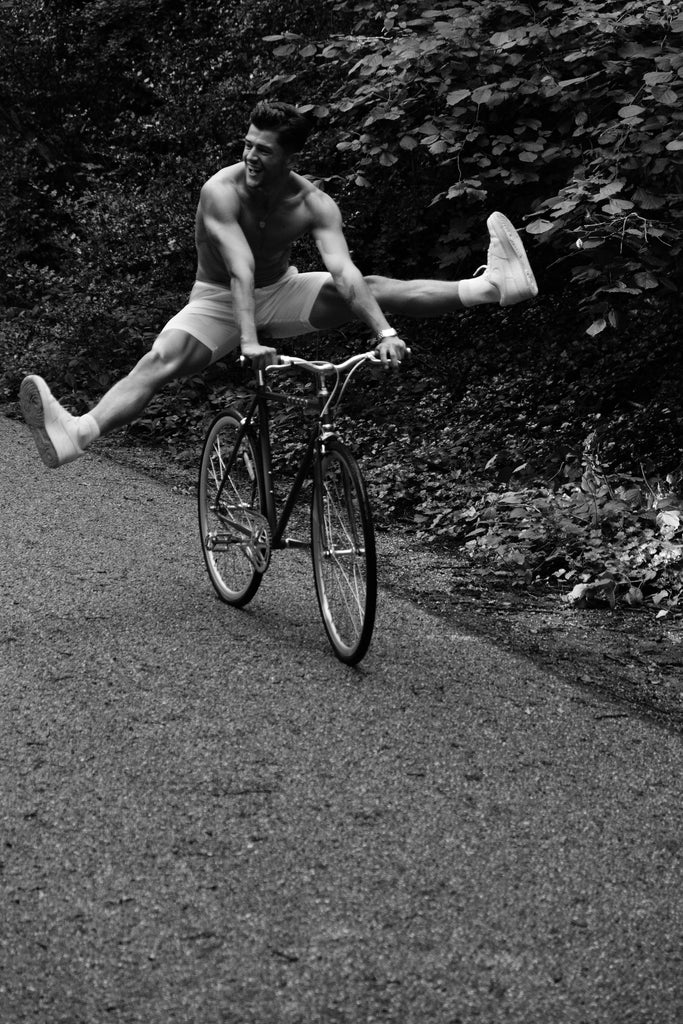
Frequently Asked Questions (FAQs)
Let’s go through them!
Why would anyone buy a fixie bike?
If you are interested in getting a bicycle to commute to work, school, or just to ride around your neighbourhood, consider a fixie bike! They are stylish, fun, and require very little maintenance.
Additionally, It’s easy to customize your ride by changing out components like wheels and tires on these bikes because there aren’t any gears or derailleurs that could get damaged during installation. It can be done in under 10 minutes!

What is a fixie bike and what are its advantages?
A fixed gear bike is pretty much what it sounds like: it's a bike that doesn't have any freewheel mechanism (like the one in your car), so that when the wheels turn, so do the pedals. On the other hand, single speed bikes do have a freewheel cog that moves independently of the rear wheel.
Both single-speed and fixed-gear bikes have a single front chainring and single rear cog, though they are not identical. All Steed Bikes are delivered as single-speed, but our clever design allows you to switch between the two. You might want to read over our bike assembly guide first though!
One of the main advantages of a fixed gear bike is its simplicity. It's about as simple as you can get. There are no shifters. No stress. One gear, one speed, that's it.
Additionally, because they are such simple machines, there are fewer moving parts that could break or wear out. This makes them very reliable and durable; they will last a very long time if taken care of properly.
For answers to more frequently asked questions head to our FAQ page.
Final thoughts
Cycling is more than just a means of getting around. It's a culture, a way of life. And here's the thing: if you have a fixie bike, it means you're cool. If you don't have one, stop reading this and go buy one.
Fixie bikes are the best. They're stylish, they're unique, and they're perfect for making a statement. Learning how to stop your fixie bike without brakes may just be one of the best feel goods you can get from your riding experience.
0 comments


